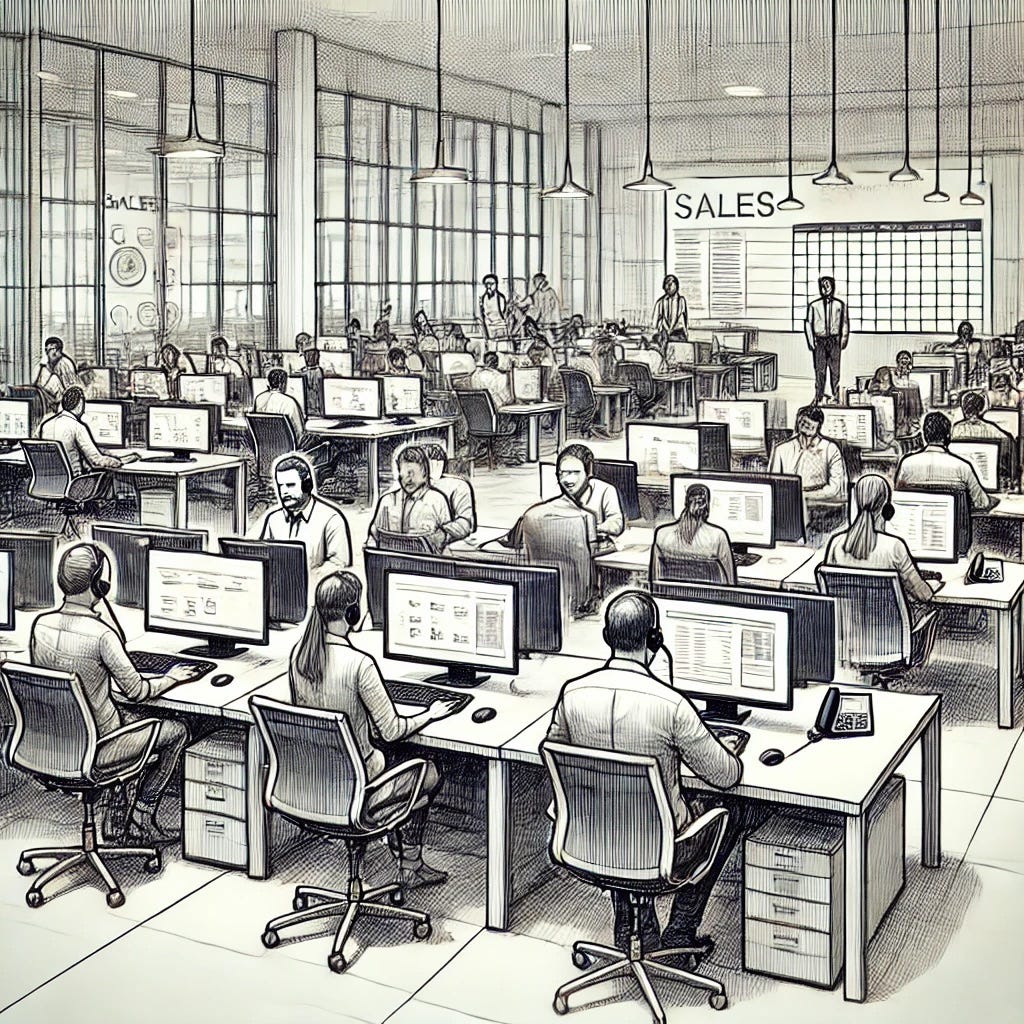#31 - The Future of SDRs
During my senior year of college I stumbled across Marc Andreesen’s seminal piece Why Software is Eating the World.
And after reading and digesting his thoughts on where the world was going, I wanted nothing more than to break into tech.
In 2014, opportunities outside of Silicon Valley for non-computer engineers were scarce. But there was an emerging VC industry in Boston - with several firms focused on investing in growth at companies that had established product-market-fit.
Investing in growth meant investing in significant sales/marketing horsepower. This shift opened up entry-level opportunities at dozens of Boston-based technology companies for Sales Development Reps (“SDRs”).
I landed one.
My daily existence became cold-calling and cold-emailing (day-in and day-out) at significantly lower entry-level pay than my friends going into Commercial Real Estate and Investment Banking.
Over the next few years, however, these jobs went from being a relative afterthought to the most sought after entry-level position for recent college grads. Pay became comparable, and even more lucrative, than the jobs in finance and real estate. And it was also a lot more fun.
The Black Duck Experience
For four years, I’d hop in my car in South Boston and drive 35 minutes north to HQ in Burlington MA.
I’d enter the front door, turn right, grab a quick coffee in the kitchen and continuing walking into an expanse filled with long-tables. Over the next few hours the place would fill out with ~50 inside sales reps.
Music was playing through a central speaker system and SDRs (equipped with those weird looking headsets that have a mouthpiece) were building lists and hammering calls.
This was the stereotypical “bullpen” that characterized fast-growing VC-backed software companies in the 2010s. While our revenue grew 4x in just a few short years leading to an incredible exit ( >$500mm), I’d be hard-pressed to think that the P&L for the inside sales org was anything but red.
In some ways we got very lucky. As an earlier player in the cybersecurity SaaS market we were early adopters of platforms like Salesloft, Zoominfo and Drift, which allowed us to reach decision makers when phone and email channels weren’t so clogged.
Each team could predictably set up dozens of meetings per week through high-volume, generic value prop, outbound prospecting. Now, they’d be lucky to set up a couple meetings per month.
The sheer number of early-stage tech companies exploded during the “Golden Age of SaaS.” And the vast majority of these companies invested in, and abided by this playbook.
Between the saturation of email/phone channels + a non-favorable interest-rate environment over the past few years, best practices have changed as tech companies (and especially GTM orgs) need to run a lot more efficiently.
Put simply, in 2024, the economics on the old playbook no longer works.
Will this SDR role be retired?
Absolutely not.
But teams will be smaller, scrappier and need to prove profitable (not just meeting revenue targets) in order to sustain long-term.
Here is how SDR teams will evolve for the balance of the 2020s:
Reduction in Headcount: As AI advances, it will become more capable of handling repetitive and time-consuming tasks, such as data entry, lead qualification, and initial outreach. Automating this low-value work, will open up a significant amount of capacity on a per rep basis. Thus, fewer reps are required.
Shift in Focus: SDRs will spend less time on basic outreach and more time on high-value activities. This might include strategic account planning, personalized outreach, and relationship building. The role will shift from being task-oriented to more strategic and consultative.
Higher Skill Requirements: The role of an SDR will require a higher level of expertise in using advanced sales tools and technologies. Skills in data analysis, CRM software, and understanding complex sales processes will become a prerequisite for landing one of these coveted roles - not learned on the job.
Outsourcing: Off-shore talent, in the right markets, has proven to be as performant as their internal counterparts at a fraction of the cost. Finding a third-party firm operating in a low-cost market that can efficiently stand-up and manage a team to take on all of the high-volume outbound work, will be the norm. These agents will not replace SDRs, instead, they will augment a smaller, more strategic team of internal SDRs that will become future closers.
Integration with Other Roles: The distinction between SDRs and other roles, such as marketing and customer success, will blur. The combination of PLG + automation will make customer acquisition a lot more efficient. These roles will focus less on cold outreach to push people into the funnel and more about content creation and other marketing activities to pull people in, and customer enablement to help prospects after they’ve signed up for a trial. And/or, if they’ve already bought the solution, ensure they realize value to ensure retention and expand usage.
Continued Importance of Human Touch: Despite advancements in technology, the human element in sales remains crucial. High-touch interactions, building trust, and understanding complex customer needs cannot be automated. Therefore, while the number of SDRs might decrease, their role in the sales process will be far more focused on understanding challenges unique to specific companies while effectively communicating the right solution that properly addresses these problems. No more pitching.
Overall, the trend suggests a potential decrease in the number of traditional SDR roles, but those that remain will be more specialized, skilled, and integrated into broader sales and marketing strategies. These more highly skilled SDRs will become masters in leveraging technology to drive more strategic and personalized sales efforts.
RIP inside sales bullpens.


